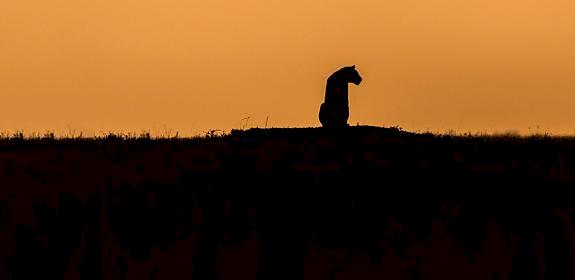
Trading Nature: the contribution of wildlife trade management to sustainable livelihoods and the Millennium Development Goals
The marine aquarium trade provides income for poor people in coastal communities where few other livelihood options exist and earnings can be substantial. ©Tantyo Bangun / WWF-Canon
i
- »
- 出版物 »
- Reports »
- Trading Nature: the contribution of wildlife trade management to sustainable livelihoods and the Millennium Development Goals
Published 24 May 2008
Well-managed wildlife trade can benefit poor communities—TRAFFIC, WWF
Bonn, Germany, 24th May 2008—Well-managed wildlife trade has the potential to deliver significant development benefits for the world’s poor, finds a new report by TRAFFIC, the wildlife trade monitoring network, and WWF.
Trading Nature: the contribution of wildlife trade management to sustainable livelihoods and the Millennium Development Goals
Report author(s):
D. Roe
Publication date:
May 2008
key findings

Trading Nature: the contribution of wildlife trade management to sustainable livelihoods and the Millennium Development Goals (PDF, 3.1 MB) shows that wildlife trade offers opportunities to the poor and benefits to local communities, but these are threatened when illegal or unsustainable trade is allowed to flourish.
The legal, international trade in wild plants and animals and the products derived from them was estimated as worth close to USD300 billion in 2005, based on declared import values—and the value is rising.
The report finds that well-managed, legal and sustainable trade can also have a significant impact on all eight of the Millenium Development Goals (MDGs), the globally agreed roadmap for development, which lay out targets on poverty and hunger reduction (MDG1) access to education (MDG2), healthcare (MDGs4, 5 and 6), environmental sustainability (MDG7) and good governance (MDG8).
Wildlife products traded include medicines, food, clothing, ornaments, furnishings, pets, ornamental plants, zoological and botanical display, research, manufacturing and construction materials. As well as contributing to the incomes of the poor, many also contribute directly to their housing, health and other needs.
The report examines case studies on the wild meat trade in East and Southern Africa, the trade in Peccari and Caiman skins and Vicuña wool in Latin America and the trade in Asian coastal fisheries products. For example, in the Philippines, seahorse fishers and traders reported their catch contributes around 30–40% to their annual income—although sometimes reaching 80%.
According to Dr Susan Lieberman, Director of WWF International’s Species Programme: “Trade in wildlife products can have a significant positive economic impact on people’s livelihoods, childhood education, and the role of women in developing countries, provided it is legal, well-managed and sustainable.”
Conversely, wholesale ‘plundering’ of natural resources and illegal trade not only deplete wildlife populations, but also deprive poor communities of vital livelihood benefits.
“Without good governance of wildlife trade, none of the other MDGs are truly attainable,” said Steven Broad, Executive Director of TRAFFIC.
“We call on governments to pay greater attention to resource access issues, and to develop innovative approaches to address unsustainable harvesting of the most commercially valuable wildlife commodities.”
The report recommends governments explore semi-intensive production methods, experiment with management regimes that support sustainable off-take levels for species in trade, develop ‘pro-poor’ approaches to standards and certification schemes, and explore co-ordinated approaches to different components of wildlife trade, such as balancing commercial and subsistence interests.
The report recognises some of the challenges facing the use of wildlife trade as a development tool. In particular, it highlights the need for secure ownership of wildlife resources by poor people, potential pitfalls with certification schemes, captive and semi-intensive production, and the problems of benefits filtering down to producers along lengthy, complex trade chains.
Conversely, wholesale ‘plundering’ of natural resources and illegal trade not only deplete wildlife populations, but also deprive poor communities of vital livelihood benefits.
“Without good governance of wildlife trade, none of the other MDGs are truly attainable,” said Steven Broad, Executive Director of TRAFFIC.
“We call on governments to pay greater attention to resource access issues, and to develop innovative approaches to address unsustainable harvesting of the most commercially valuable wildlife commodities.”
The report recommends governments explore semi-intensive production methods, experiment with management regimes that support sustainable off-take levels for species in trade, develop ‘pro-poor’ approaches to standards and certification schemes, and explore co-ordinated approaches to different components of wildlife trade, such as balancing commercial and subsistence interests.
The report recognises some of the challenges facing the use of wildlife trade as a development tool. In particular, it highlights the need for secure ownership of wildlife resources by poor people, potential pitfalls with certification schemes, captive and semi-intensive production, and the problems of benefits filtering down to producers along lengthy, complex trade chains.
$300 billion
the estimated value of legal, international trade in wild plants and animals in 2005, based on declared import values
30–40% of annual income
derived from seahorse fishing and trading for some in the Philippines
Wildlife products traded
include medicines, food, clothing, ornaments, furnishings, pets, ornamental plants, zoological and botanical display, research, manufacturing and construction materials.




